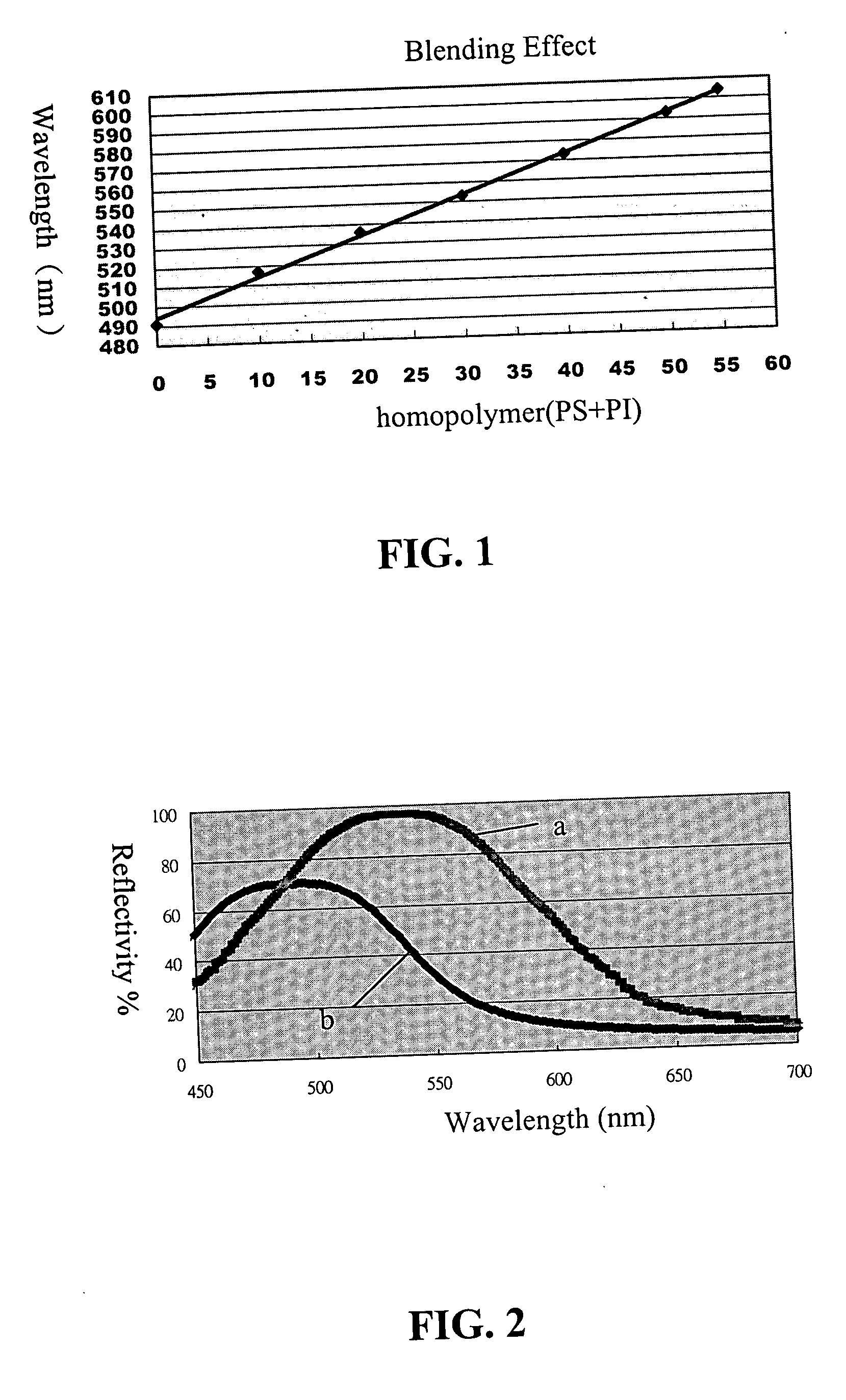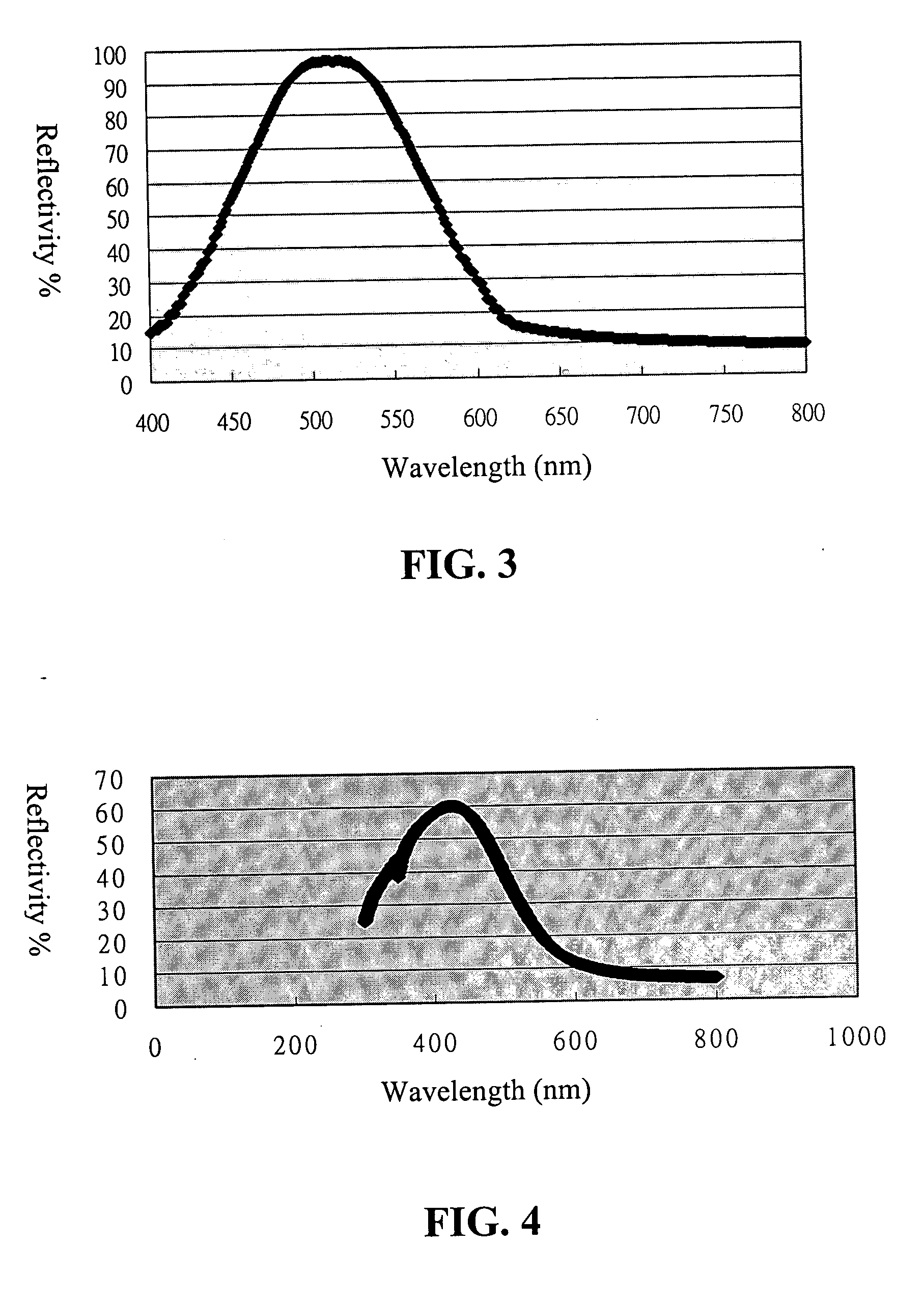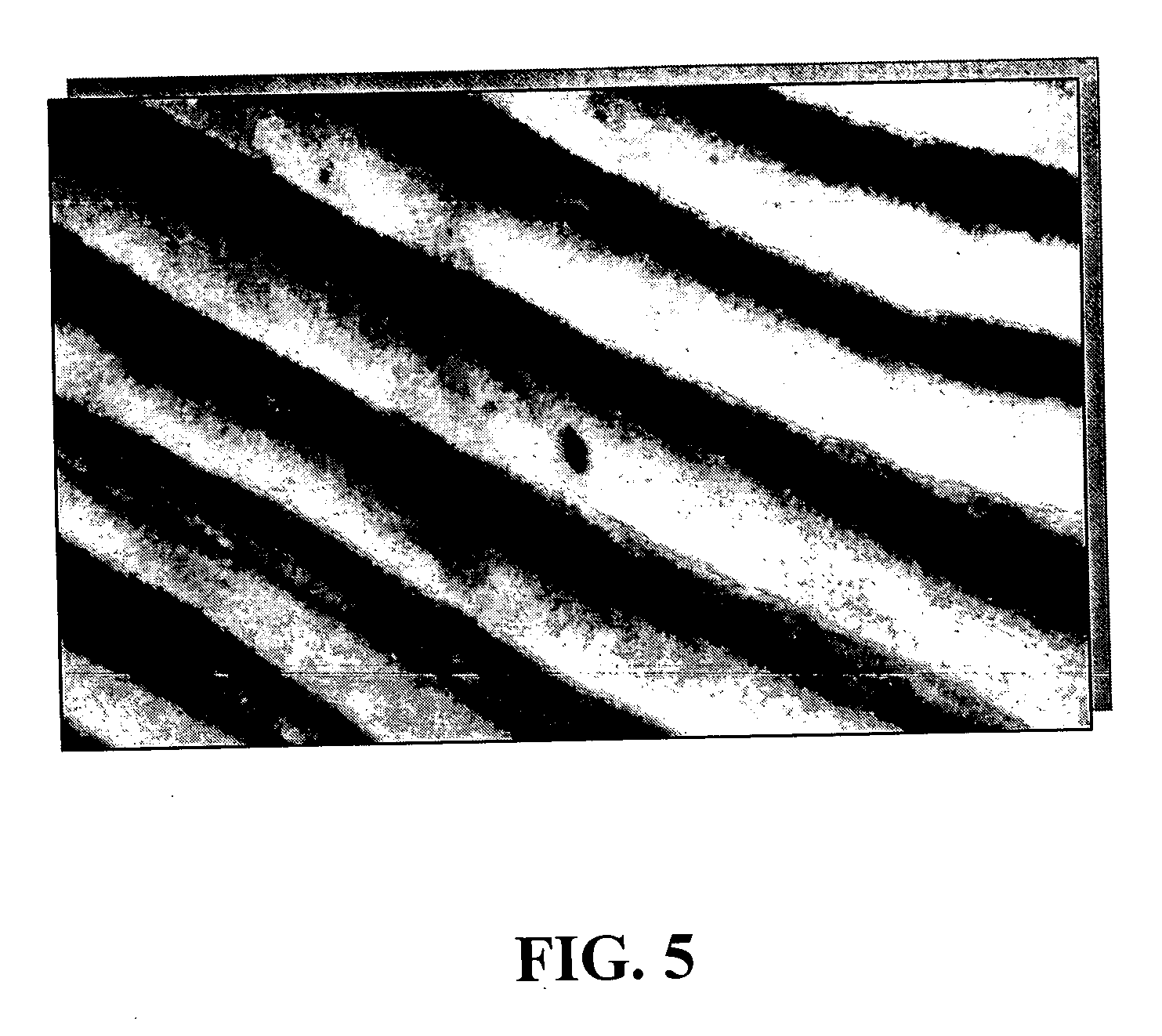Organometallic polymeric photonic bandgap materials
a polymer and organic technology, applied in the field of organic polymer polymeric photonic bandgap materials, can solve the problems of deficiency of photo-electric effect and low reflectivity, and achieve the effect of low reflectivity and high reflectivity
- Summary
- Abstract
- Description
- Claims
- Application Information
AI Technical Summary
Benefits of technology
Problems solved by technology
Method used
Image
Examples
example 1
[0040] Preparation of Functionalized Organometallic Homopolymer:
[0041] 1. Synthesizing (PS)nPPh2P (Mw<15000, P.D.I<1.3):
[0042] Dissolve styrene monomers into THF solution system; inject sBuLi at this time, stir for about 15 minutes to allow for reaction; overfeed with PPh2PCl; stir for about 5 minutes; slowly pour the polymeric solution into methanol to obtain the polymeric precipitated (PS)nPPh2P; filter; and suck with a vacuum system.
[0043] 2. Synthesizing Tp(PPh3)[(PS)n PPh2P]Ru—C═C(Ph)CHCN:
[0044] Place Tp(PPh3)2Ru—C═C(Ph)CHCN and (PS)n PPh2P (Mw<15000, P.D.I<1.3) in dichloromethane system; stir for about 15 to 60 minutes to allow for reaction; suck the system with vacuum system; extract with n-pentane and dry.
[0045] Manufacturing Process of Photonic Bandgap Material Sample—Bulk State Part:
[0046] 1. Each component is dissolved into the solvent (cumene or toluene) separately according to their ratio (the weight ratio of PS-b-PI / Tp(PPh3)[(PS)n PPh2P]Ru—C═C(Ph)CHCN / PI is compo...
example 2
[0053] Preparation of Organometallic Homopolymer:
[0054] 1. Synthesizing (III)Ti—PSn (Mw=9159, P.D.I=1.18):
[0055] Dissolve styrene monomers into cyclohexane solution system; inject sBuLi at this time, stir for about 30 minutes; place ClTi(OiPr)3 in the system; stir the system over night; slowly pour the polymeric solution into methanol to obtain the polymerid precipitated (III)Ti—PSn filter; and suck with a vacuum system.
[0056] Manufacturing Process of Photonic Bandgap Material Sample—Bulk State Part:
[0057] 1. Each component is dissolved into the solvent (cumene or toluene) separately according to their ratio (the weight ratio of PS-b-P[ / (III)Ti—PSn / PI is composed of 100 / 0 / 0, 97 / 1.5 / 1.5, 80 / 10 / 10, 76 / 12 / 12, 70 / 15 / 15, 60 / 20 / 20, 50 / 25 / 25, 40 / 30 / 30. etc.) under room temperature.
[0058] 2. Pour the solution into the petri dish and cover it with a lid, such that the solution is completely surrounded by an environment of cumene or toluene; slowly volatilize the solution under low tempe...
example 3
[0060] Preparation of Organometallic Homopolymer:
[0061] 1. Synthesizing(PPh3)2NiBr—PS (Mw=9592, P.D.I=1.86):
[0062] Dissolve styrene monomers into cyclohexane solution system; inject sBuLi at this time, stir for about 30 minutes; place (PPh3)2NiBr—PS in the system; stir the system over night;
[0063] slowly pour the polymeric solution into methanol to obtain the polymeric precipitated (PPh3)2NiBr—PS ; filter; and suck with a vacuum system.
[0064] Manufacturing Process of Photonic Bandgap Material Sample—Bulk State Part:
[0065] 1. Each component is dissolved into the solvent (cumene or toluene) separately according to their ratio (the weight ratio of PS-b-PI / (PPh3)2NiBr—PS / PI is composed of 100 / 0 / 0, 97 / 1.5 / 1.5, 80 / 10 / 10, 76 / 12 / 12, 70 / 15 / 15, 60 / 20 / 20, 50 / 25 / 25, 40 / 30 / 30. etc.) under room temperature. 2. Pour the solution into the petri dish and cover it with a lid, such that the solution is completely surrounded by an environment of cumene or toluene; slowly volatilize the solution un...
PUM
| Property | Measurement | Unit |
|---|---|---|
| Wavelength | aaaaa | aaaaa |
| Wavelength | aaaaa | aaaaa |
| Optical reflectivity | aaaaa | aaaaa |
Abstract
Description
Claims
Application Information
 Login to View More
Login to View More - R&D
- Intellectual Property
- Life Sciences
- Materials
- Tech Scout
- Unparalleled Data Quality
- Higher Quality Content
- 60% Fewer Hallucinations
Browse by: Latest US Patents, China's latest patents, Technical Efficacy Thesaurus, Application Domain, Technology Topic, Popular Technical Reports.
© 2025 PatSnap. All rights reserved.Legal|Privacy policy|Modern Slavery Act Transparency Statement|Sitemap|About US| Contact US: help@patsnap.com



